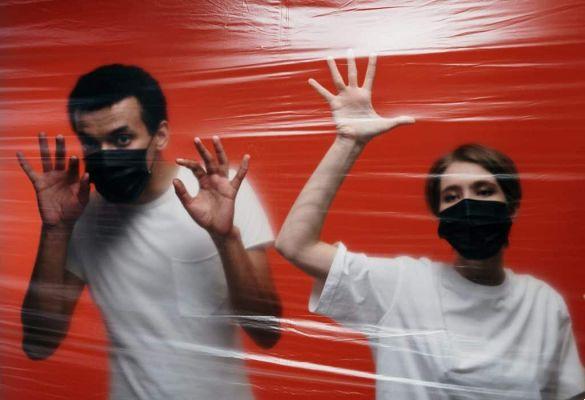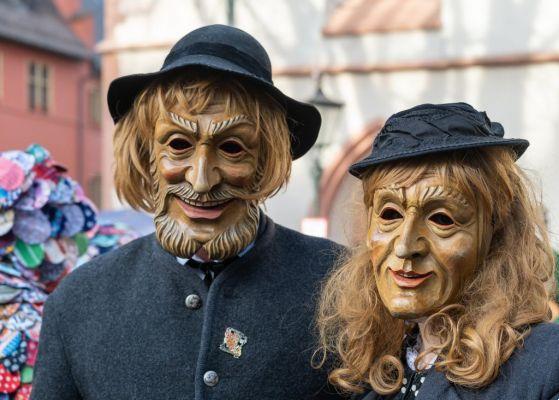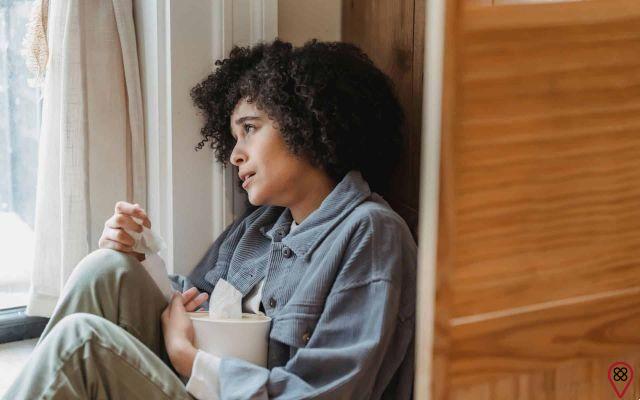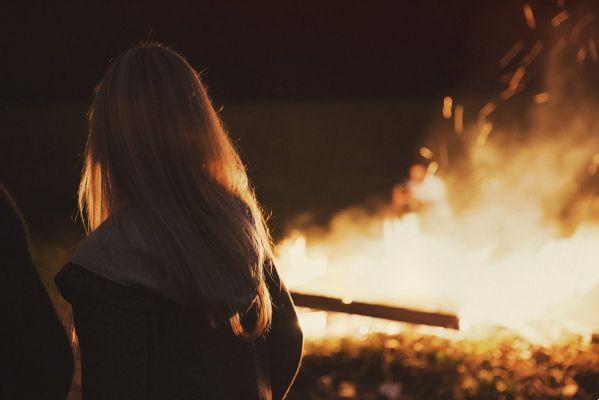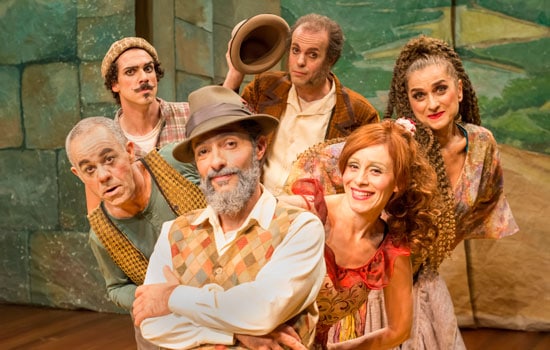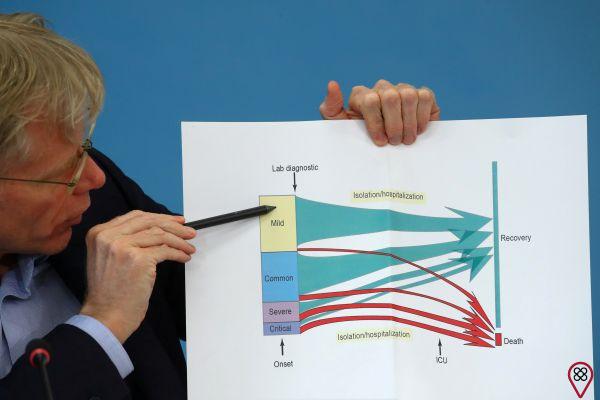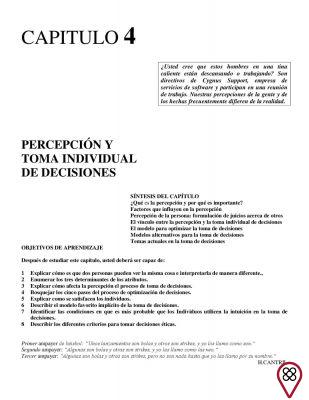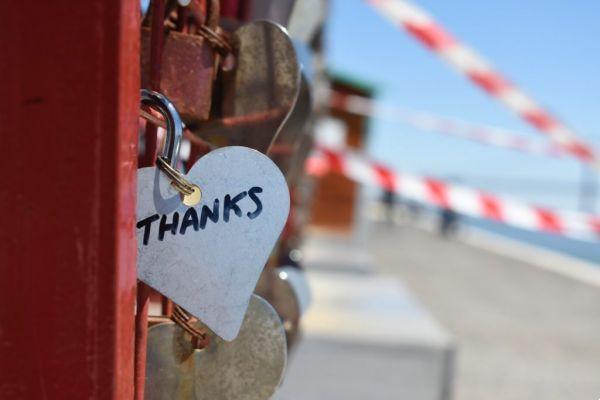The Christmas season has a magic that enchants everyone. In addition to meeting with family and friends, everything is lit, colorful and decorated for one of the most symbolic nights of the year.
Find out now about the origin, what the main ornaments represent and where to adapt them in Christmas decoration, as well as artisanal suggestions for making some.
Christmas tree
The Christmas tree is a symbol of life, hope, joy and unity (there are places where the whole family decorates the tree). Pine, natural or artificial, is the most used in this ornament. In countries with severe winter, it is the only one that does not lose its leaves, which even with the snow remain green, in addition to having a triangular shape, alluding to the Holy Trinity in Christianity.
The idea began when the Romans celebrated Saturn, the god of abundance, on the winter solstice on December 21, at the feast called Saturnalia. They decorated the trees, considered the symbol of fertility, the continuity of life and the connection between Earth and Heaven.
The Christmas Tree as it is today emerged in XNUMXth century Germany, when Martin Luther, impressed by the snow-covered pine trees and lit by starlight, reproduced the image in his home by decorating a tree with candlelight at night. from Christmas.
In the XNUMXth century, Prince Albert, husband of Queen Victoria, took the idea from Germany to England and popularized the image with the family in front of the symbol. With Queen Elizabeth I, the gifts she received for Christmas were placed under a decorated tree in the garden.
Currently, balls (symbolizing the “fruits” of life) are used as ornaments on the Christmas Tree, bows, bells, sweets, flashing lights and others. At the top is placed a star, symbolizing the Star of Bethlehem.
One of the most famous Christmas trees is the one at Rockefeller Center in New York. Officially assembled since 1933, it is between 21 and 30 meters high, has about 30 light bulbs, broadcast on TV when they are lit and attracts thousands of people from all over the world.
This ornament of varying sizes is positioned in prominent places in public buildings. In residences, they are located in the living room, in a visible and attractive corner.
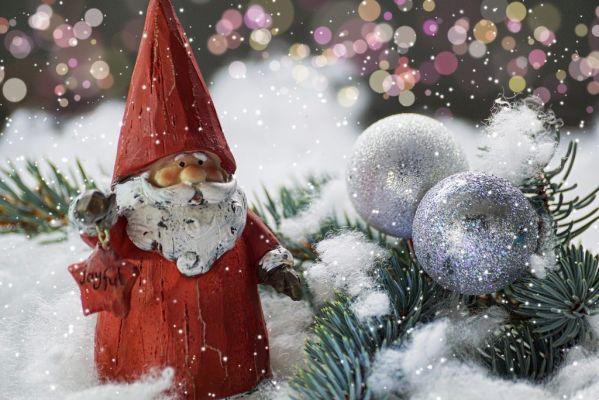
Santa Claus
Santa Claus is the symbol of kindness and charity. It was inspired by Saint Nicholas, canonized bishop of the Catholic Church, who lived in the fourth century in the city of Myra (currently Demre, Turkey), who, detached from material goods, to free three girls from poor families from prostitution, threw three bags of gold coins down the chimney of the house where they lived. They landed on top of the socks they'd laid out on the fireplace to dry.
It is a very common ornament, made in different materials and placed in various places in homes and throughout the city, even on the roofs of houses.
Some malls make the emblematic arrival of Santa Claus, for the children's joy and lots of photos.
Nativity scene
The scenario where Jesus Christ was born is the only one based purely on the Christian gospels. It is displayed in a visible place, in the living room or reception of public buildings. The first crib was created by Saint Francis of Assisi, in Greccio, Italy, in 1223 and represents simplicity, humility, love and gratitude. Each element of the Christmas Nativity scene has a meaning:
Joseph – the responsible and hardworking man, who loves, supports, guides, respects and is devoted to God, being a husband, companion and father.
Mary – the worthy woman, wife and faithful companion, who gives herself, dedicates herself, educates, prays and fulfills the will of God, being the pure mother, who gives birth to the Messiah.
The animals, the hay and the grotto – represent the concrete relationship of interdependence between man and nature and the reception of it to man with creatures that please God.
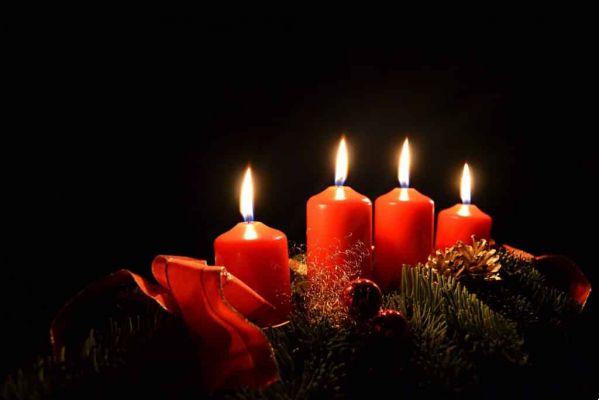
The shepherds and the Three Wise Men – the simple and the educated, symbolize wisdom and the search for understanding the signs of God and His presence in all human beings. Melchior, Gaspar and Balthazar brought Jesus gold, frankincense and myrrh as gifts to the King (it was believed that when a king was born, a very bright star appeared in the sky).
Gold represents divine royalty, providence and protection. Incense symbolizes faith and prayer that comes to God. Myrrh, an antibacterial vegetable oil extracted from a tree of the same name, was used to cleanse Jesus' body and protect it from disease and preserve the human embodiment of the divine.
The Star of Bethlehem – the light of God in our lives, illumination.
The angels - The messengers of God, represent the news of the coming of the Messiah.
Christmas candles
The Romans were the first to make candles, starting in the year 500 BC.
At Christmas, candles symbolize the source of light in darkness, security and warmth. They represent the presence of Jesus Christ among us, the great light that came to illuminate the world and human life. They are used in the wreath">Advent Wreath, on the supper table, on the coffee and side tables in the living room, and on a sideboard in the reception of a building, for example. There are golden, red, colored, glitter candles and others, in various formats, which are joined to foliage, bowls, creative supports, beautifying and illuminating the decor.
Star
The stars decorate everywhere at Christmas, especially at the top of the Christmas Tree and make reference to the Star of Bethlehem that indicated to the Magi the birthplace of the Messiah and represents him as the light of the world, the direction, the meaning of humanity. , the brightness and illumination on the path to be followed in the good and in the practice of the truth.
Fate of Natal
Bells, in general, serve as a sound signal about an event, since ancient times. In the case of the Christmas bell, it warns of the birth of Jesus Christ and represents good luck. It can be used on the Christmas Tree, on the door wreath, on the four corners of the supper tablecloth or as a decoration object for shelves and counters, usually with a lot of shine, in gold and red colors.
wreath">Advent Wreath
This ornament was first made in Hamburg (Germany) in 1839 by Johann Wichern, who took care of orphaned children. They were anxious about when the Christmas festivities would be. He created a wheel with a candle for each day leading up to Advent (the birth of Jesus Christ), with the four largest representing Sundays. In 1925 it was used by the Catholic Church for the first time in the city of Cologne.
The wreath">Advent Wreath is made in a circular shape, symbolizing the eternity of God and the alliance of Humanity with Him. Green branches represent continuity of life and hope, which leads to perseverance. A red ribbon indicates the strong and infinite love of the Creator that surrounds us completely. A candle for each Sunday leading up to December 25 makes up the ornament, symbolizing the Advent vigil and preparation for the coming of Jesus Christ into the world.
wreath
The garland appeared in ancient Rome, in the celebration of Saturnalia. Families received a wreath of entwined branches of foliage, which was placed on the doors and windows of houses to attract good luck and health.
The Celts also placed on doors and windows, the garland made in a circular shape with branches of pine trees, ivy, holly and other plants, to welcome the gods and as a symbol of hope for the renewal of life.
In the Middle Ages, the Christmas Wreath was used on doors to ward off evil spirits and bad luck.
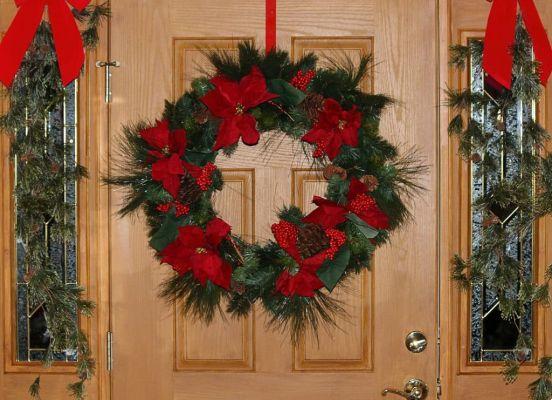
With Christianity, the Christmas Wreath, mainly made with holly branches and fruits, represents the crown of thorns and the drops of the blood of Jesus Christ at the crucifixion and has the meaning of His eternal love and rebirth.
Currently, the Christmas Wreath contains leaves, balls, bows, candy and other materials; It can be placed anywhere in the house or public establishment, but it is usually displayed on doors and windows to attract physical and mental health, peace, prosperity, good energies and welcome everyone.
Make your own decorations
Candy Christmas tree
Material: a styrofoam cone in the size of your choice; round chocolates of your choice, wrapped in paper in the color of your decoration (gold, silver, red), in sufficient quantity to cover the cone; hot glue gun and stick; cardboard plate or disk with the same diameter as the cone and masking tape.
Assembly: it is done from the base line of the cone, about one centimeter above (place the bonbon so that there is no visible space for the styrofoam). Place a dot of glue in the measure found, enough to fix the bonbon, being careful not to burn yourself or damage the styrofoam base or the bonbon. Fix the bonbon, holding for a few seconds to firm. Do it all around the cone, in a horizontal line. In the second row, intersperse the chocolates, in order to cover the entire styrofoam, and glue them one by one. Do the same until the top of the cone. On top, glue a bonbon, finishing the ornament. Make rolls of masking tape and fix it under the base of the cone and then on the plate or cardboard disk. Your tree is ready!
side table arrangement
Material: three good quality candles, in different sizes, in the color of your choice, with a circumference of not less than 4 cm; three bowls of different heights, with a base that holds the candles and at least 1 cm in circumference, preferably made of glass; Christmas balls in the color of your choice; green leaves, which can be laurel or artificial, to form a base.
Assembly: the cups will be with the rim down. The base or the “foot of the cup” will serve as a support for the candle. First place the Christmas balls inside the bowl. Place the green leaves on top. Carefully turn over the table so that the leaves form the base for the balls and are limited to the rim of the cup. Arrange according to sizes, from largest to smallest, in a row or the way you prefer. Place the candles on the base of the cup and light the flame. It is important that the candle is of good quality to burn evenly and concentrate the melted wax in the center of the candle. Your arrangement is ready!
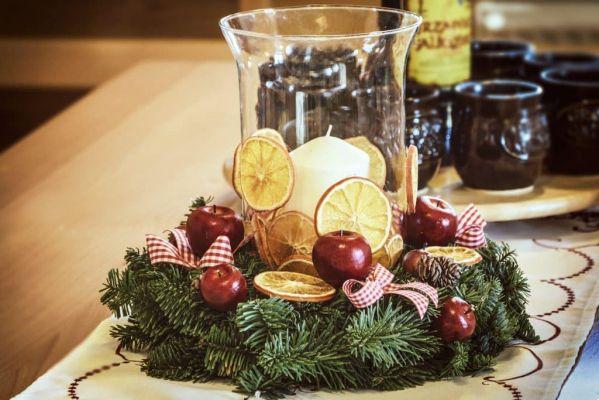
door pendant ornament
Material: 50 cm ribbon with a width of seven to ten centimeters, preferably in green, red and gold checkered; masking tape, approximately one meter of San Francisco cord in the color that matches the tape you chose; a mini-pinecone (can be any ornament you already have) and two Christmas balls (plastic material or styrofoam), preferably shiny and in the color and size that harmonize with the rest of the ornaments.
Assembly: pass 25 cm of string through the ring of the Christmas ball, tying it tightly. For the other ball, use 20 cm of string and repeat the procedure. For the pinecone or other ornament, tie 30 cm of cord. The idea is to have the ornaments at different heights, about 30, 25 and 20 cm. Tie the three strands together in a knot at the end opposite the ornaments. Cover the knot with masking tape, so that it is very secure and cover with a piece of the wide tape, gluing it with white glue. Make a separate loop about 7 inches in diameter with the ribbon, leaving an excess ribbon that covers the vertical half of the ornament's cords, but doesn't reach the pendants. Glue the end of the knot with white glue. Let it dry well. Behind the bow, glue one end of the 50 cm ribbon with white glue. (You don't need nails, fees or anything else to fasten). Center the ribbon and ornament horizontally across the door and run the other end of it to the top base of the door, where it joins the frame. Adjust the height of the ornament to the vertical of the door and cut the ribbon if there is any excess. Fix the end to the upper base of the door, with masking tape. It will not disturb the closing, it will be hidden and give a good finish to the ornament. If you need to, make a roll of masking tape and place it behind the vertical extension of the tape, to secure it to the door. Your door ornament is ready!
Many Christmas arrangements make a beautiful decoration on centerpieces, door handles, wall panels, supper table, handrails and stairs, among others. Brightness, light, colors like green, red, white, gold and silver, natural elements like pine cones, wheat branches, fruits, chestnuts and flowers join reindeer, bears, snowmen and other animals to create the Christmas mood.
You may also like
- Learn how to keep the essential meaning of Christmas every day
- Discover the beautiful story of Christmas long before Santa Claus
- Make your Christmas decorations, economical, personal and creative
Now that you know a little more about some Christmas decorations and have suggestions for making some, get inspired to decorate your home, office and involve everyone in the spirit of fraternity and hope. Merry Christmas!




